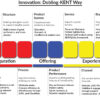
In what has now become the buzz in India’s healthcare investment circles, Manipal Hospitals recently made headlines by acquiring Sahyadri Hospitals—Maharashtra’s largest private hospital chain—paying the astounding ₹4.3 crore per bed. It isn’t just a record for Manipal, however—it’s the highest-ever paid per bed in the Indian hospital purchase market. To put that in perspective, in 2023, Manipal had acquired the 1,200-bed AMRI Hospitals at ₹1.9 crore per bed, while in 2024, the legacy 550-bed Sahara Hospital in Lucknow was acquired by the buyout group, Max Healthcare, at ₹1.7 crore per bed. So what made Manipal take such an aggressive step—and might it be something bigger in the company’s direction heading up to its anticipated IPO in 2026?
To understand this brilliant deal, one must consider the numbers, of course, but critically, the strategic logic. Sahyadri Hospitals enjoys a massive presence—11 hospitals, 1,400 beds in strategic Maharashtra cities such as Pune, Nashik, Ahilya Nagar (Aurangabad), and Karad. What this network brings Manipal is immediate, deep market penetration in one of India’s most appealing healthcare markets. Maharashtra isn’t just India’s second-most populous state, yet among India’s most fast-growing private healthcare markets, spurred by growing demand for tertiary care, chronic disease management, and medical tourism.
But the Sahyadri deal is about something larger than market expansion. It’s a strategic bet in line with Manipal’s goal of becoming India’s leading hospital network prior to its IPO. By virtue of the deal, Manipal has overnight increased its footprint to a bed count of over 12,000 in 49 hospitals, making it India’s largest hospital chain. The increased scale and geographical diversity are not merely aspirational on an investor pitch document—they directly affect revenue estimates, brand worth, and investor sentiment. Sources in the industry confirm that this lone transaction has enabled Manipal to elevate its estimated IPO valuation from around $8–10 billion to a whopping $13 billion in a mere three months.
What Manipal is developing isn’t scale—it’s strategic depth. With new acquisitions, the hospital chain selectively builds a portfolio that has reach, specialisation, and profitability. More than increasing bed counts, Manipal has focused on centres of excellence in oncology, neurology, orthopaedics, and robotic surgery. High-end specialities significantly enhance average revenue per occupied bed (ARPOB) and add to margins, making the business very attractive to institutional investors, as well as to analysts. Apart from that, the organisation has standardised operations in all newly acquired hospitals to achieve backend efficiency, beginning from procurements, staff, to digital record systems, as well as diagnostic standardization. But such fast-paced growth does pose some immediate questions. One of the immediate concerns among observers of healthcare policy is whether such costly acquisitions will eventually result in higher healthcare expenses by the patient—most of all, those without insurance coverage. It has traditionally been the case that big hospital groups have come under criticism for increasing procedure charges in an effort to recover acquisition expenses or support return expectations among investors. With health insurance penetration in India remaining relatively low, that would place yet another strain on middle-class as well as lower-end patients, mostly in Tier-2 cities.
There’s also the competition dimension. Manipal’s spree of acquisitions might set a new standard of market leadership, yet does that leave room for the smaller, stand-alone hospitals to coexist? Several stand-alone hospitals, whose margins are by and large thin, might struggle in competing with Manipal’s scale advantage, digitalization, and brand strength. A few might be acquired in the years to come, yet others might close down. While some argue that that will offer better-quality, standardized care, others argue that that can stifle innovation and reduce options for the patients in the local markets.
On the business side, however, Manipal’s strategy appears well-timed and sensible. It is taking bold strides to become a formidable player in bed numbers, of course, but in operational acumen, revenue potential, as well as national reach, by the time the window of the IPO in 2026 opens. Investors, foreign and local, favor market leaders, and Manipal is making that case with every transaction.
Moreover, the company is positioning itself well in an era of increasing health-tech integration and ESG (Environmental, Social, Governance) investing. Its investments in digital health platforms, teleconsultations, and structured data systems make it more attractive to tech-forward funds. At the same time, outreach efforts and rural expansion via secondary and tertiary care hospitals add to its social impact profile—another checkmark for global investors.
Ultimately, the ₹4.3 crore per bed price tag for Sahyadri may raise eyebrows today, but it fits neatly into Manipal’s broader narrative: a high-stakes, high-reward strategy to redefine private healthcare in India and emerge as the sector’s undisputed leader. Whether this aggressive consolidation pays off will depend not just on financial returns, but on how well Manipal balances investor expectations with affordable, accessible, and quality healthcare for Indian patients. With the IPO countdown in progress, the health sector—and the general population—will be keenly interested. Will this be the transformative phase of Indian health care, or the tale of excessive expansion? Time will tell in the next couple of years. For the time being, Manipal has shown all the cards in its hand in a bold, visionary, and courageous manner.
Leave a reply
















Dear Dr. Prahlada Sir,
Your insightful article on Manipal Hospitals' strategic acquisition and its impact on IPO valuation is truly commendable.
Your analysis sheds light on the intricacies of the healthcare industry and the bold moves being made to shape its future.
May your writings continue to enlighten us about the latest developments in the healthcare sector 🙏.
Reply